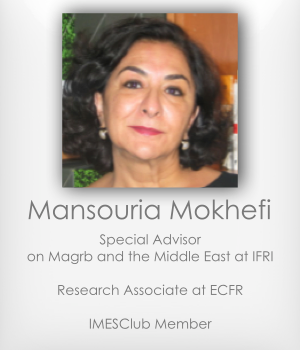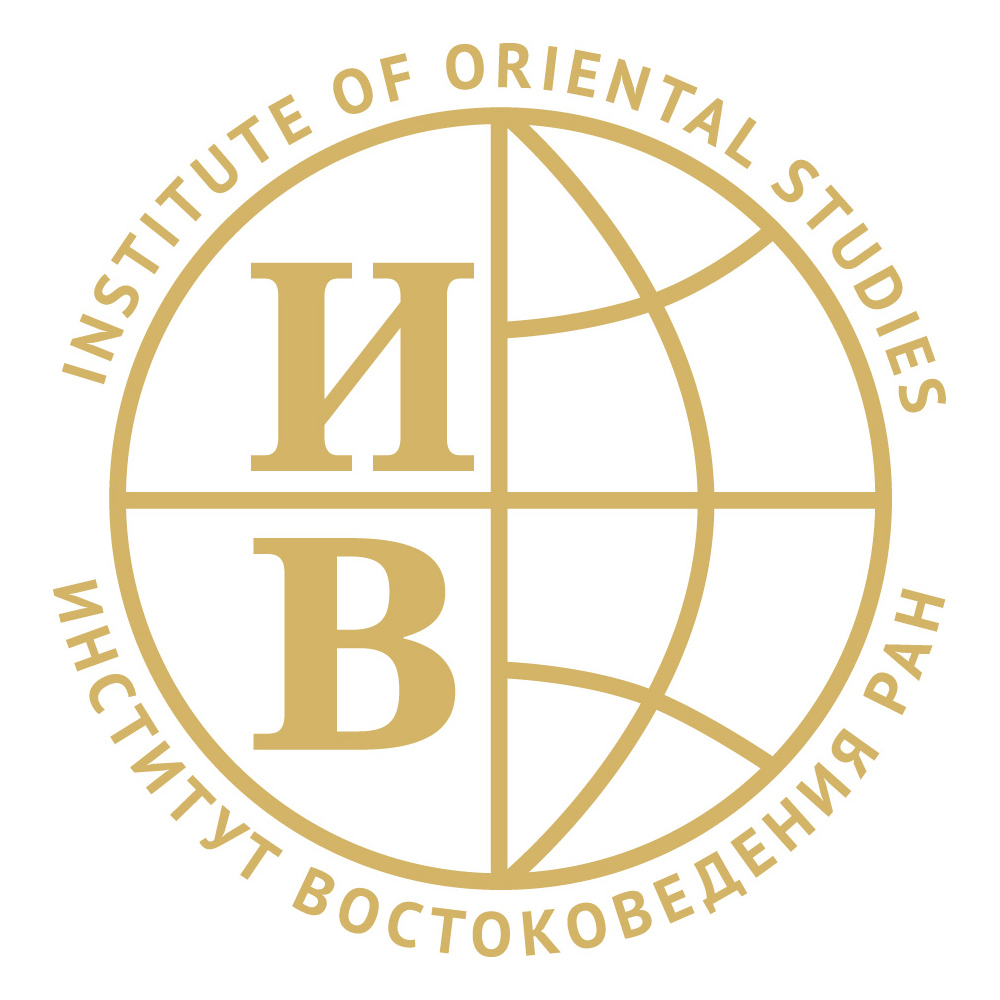Thinking Over the Arab Spring (Global University Summit-2014 speech)
 This April in the framework of Global University Summit 2014 that took place in MGIMO-University in a friendly and effective partnership with MGIMO and the Institute of Oriental Studies of the Russian Academy of Sciences IMESClub held its round-table "Global Efforts to Settle the Situation in the Middle East. Capabilities of the Deauville Partnership".
This April in the framework of Global University Summit 2014 that took place in MGIMO-University in a friendly and effective partnership with MGIMO and the Institute of Oriental Studies of the Russian Academy of Sciences IMESClub held its round-table "Global Efforts to Settle the Situation in the Middle East. Capabilities of the Deauville Partnership".
And today we're publishing the text of the brilliant speech delivered by one of three key speakers of that meeting – Mansouria Mokhefi.
Introduction
Since 2011 and the fall of Arab dictators in Tunisia, Egypt, Libya and Yemen, scholars and policymakers have sought to assess the importance of the popular protests for democratization, political stability, and geo-strategy across the Arab world. Three years later, the hopes that the uprisings would bring freedom and equality while producing stable democracies have largely gone unrealized. The post Arab spring environment, marked by political, economical and social dysfunctions as well as by internal conflicts and regional wars is more fragile, complex, volatile and dangerous than it has ever been.
Not only are an unprecedented number of Arab countries in the midst of one kind or another of large-scale armed conflicts, but new types of armed non-state actors are also waging war with local terrorist groups rising in many parts of the region. The rise of militant forces, as the result of a total failure of governance as well as a consequence of the culmination of decades of Arab resentment towards Western domination, has already shifted regional and international alliances and is about to redraw the map of the Middle East.
When assessing the so-called Arab Spring revolutions, one should not forget that the uprisings overthrew dictators but they did not overturn the prevailing political and social order: the political structures have remained unchanged despite the adopted democratic elections process and, aggravated by economic and social frustrations, and reinforced by local and regional insecurity threats, authoritarian ruling is still the norm.
One can only assess that faltering economies (1) and the rise of violence (2) are defining the new environment in an unprecedented fashion and continue to pose serious security threats (3) that are affecting the regional balance of powers (4).

1. Faltering economies
Economic liberalization taking place in Arab countries over the last three decades has resulted in greater poverty, rising income inequality and alarming rates of youth unemployment. Moreover, the region’s already stagnant economic situation has dramatically worsened in the countries that have weathered the Arab uprisings: new governments not only failed to appreciate the economic roots of the revolutions but have also been incapable of addressing the major problems of rife corruption and rooted cronyism that plague their countries. None of them has put forward the much-needed economic reforms likely to address the popular grievances or reduce the societal pressures, and a viable alternative agenda has yet to be put forward. Thus, the faltering economies, aggravated by rising prices, low wages, widespread labor strikes and a structural unemployment crisis, are still the source of growing frustrations and social unrests. Loss in revenue from oil and a substantial decrease in tourism, as well as lack of foreign investments, have turned sluggish growth to a non-existent one while paralyzing the economies and ruining the countries. The Arab spring revolutions have also revealed and widened large and increasing inequalities. The lack of opportunities for the growing number of youth is a difficult handicap to which none of the concerned countries has a solution. Therefore, post revolution Tunisian governments have been confronted by a sharp economic downturn that has been feeding political tensions and uncertainties, while Egypt is on the path to social disaster with fundamental economic problems that the large Gulf States’ assistance cannot solve. Post Arab Spring leaders are doomed to ultimately confront the same demands - “bread, dignity, and social justice” - that deposed their predecessors.
2. The rise of violence
Arab nationalism, the powerful ideological discourse of the post independence period, has showed its limits and has given way to variants of Islamism resulting in numerous sectarian factions that are fighting each other. The post Arab Spring context has demonstrated how Arab nationalism had in fact been the product and domain of Arab elites and national intelligentsias, whereas Radical Islam and different forms of Salafism have been taking hold among the massive and poor under-classes, highlighting the major division between these societies.
Tensions between radical Islam on the one hand and mainstream moderate Islam on the other have polarized many countries; they have reached alarming levels in Tunisia, culminating in the assassination of two political leaders in 2013, and precipitating the retreat of Ennahda from the government without solving the issue of coexistence between the two streams.
Ravaged by gun violence and political chaos, Libya is in the midst of a civil war. In Yemen, no real political transition has been accomplished while the North Shiite rebellion continues and the US drone war against al-Qaeda has polarized the country in a dangerous fashion.
In Syria, the death toll has reached 200,000, with roughly a quarter of the country's population displaced and despite calls from countries such as Russia, Iran and Algeria to engage in a political solution based on dialogue and reconciliation, Western countries have been opposed and Assad is still in power. Meanwhile, Djihadist radicalization and foreign militarization have aggravated a conflict that has spilled over to Lebanese soil and empowered radical Sunni jihadists like those of the Islamic State of Iraq and Greater Syria (ISIS), an Al-Qaeda offshoot with greater means and ambitions than Bin Laden’s organization.
Tensions over the place and role of the Moslem Brotherhood in Egypt have divided the country, put an end to the democratic transition, and brought back the military dictatorship. Since the military takeover, violence against Egyptian police, security and military forces has sky rocketed.
Confrontations over the Syrian war between Iran and Saudi Arabia, each backing a different side, along with their ongoing competition for the Moslem leadership, have aggravated the Shia -Sunni sectarian tensions and continue to feed violent divisions throughout the region.
Violence has been on the rise against all minorities: Christians are on the verge of total exclusion from the Middle East. And violence against women has also been recorded everywhere: while the revolutions were expected to bring equality and freedom, not only have women’s rights not been acknowledged but they have deteriorated everywhere, with an unprecedented number of rapes and alarming physical attacks reported in Egypt, Tunisia, and Libya.

3. Destabilization and security threats
The chaotic situation following Moubarak’s fall, the return to a military regime and the subsequent violent crackdown on the Moslem Brotherhood, the most intense since the 1950s, have expanded a cycle of political violence that has increased many security challenges facing Egypt. In addition to the growing domestic instability, the country is facing a growing insurgent activity in the Sinai where terrorist groups such as Ansar Beit al-Maqdis have been regularly attacking Egyptian security forces and threatening gas pipelines. The fight against these groups and their attacks has compelled the Egyptian Army into a new cooperation with Israel, but the attacks unabated.
The conflict in Syria has drawn Djihadists from all over the world. Their actions rare destabilizing the entire region with increasing threats on Jordan and Lebanon, the latter of which has already been drawn (through Hizbollah since the beginning of the uprising) into waging war in Syria. The region’s risks of destabilization are also emphasized by the fact that many countries are facing the specter of partition: Libya, Iraq, Syria, and Yemen.
Fed by extremist violence, poor governance, and social tumult, the Maghreb countries, already in varying states of crisis, are facing rising insecurity challenges as well. Terror activities have been recorded across the region, even in Algeria (attack on In Amenas in January 2013), which has managed to avoid the Arab Spring’s contagious revolutions, and in Tunisia (south of the country), which has never experienced terror attacks from Al-Qaeda. Simply put, since 2011, the chaos that succeeded Gadhafi’s fall, with Libya becoming a sanctuary for Djihadists, has been seriously threatening every neighbor’s security and stability.  The porous borders have facilitated massive circulation of weapons and the uncontrolled movement of Djihadists who have been expanding their territories and broadening their targets. Libya’s uncontrolled borders have become proliferating free-trade zones for the trafficking of weapons into neighboring areas, posing serious threats to all neighbors. This situation has propelled Algeria to increase its control over the region and to intervene beyond the country’s borders, in Malian, Tunisian, and Libyan territories. Moreover, the growing instabilities in and around North Africa, along with the difficulties in controlling trans-border terrorism, have also raised concerns regarding the possibility of the situation in the Western Sahara breeding new terrorism with militant groups operating in the camps. United Nations Secretary-General Ban Ki-moon warned about the Sahrawis’ vulnerability in the Polisario-controlled refugee camps in southwest Algeria to recruitment by criminal and terrorist networks.
The porous borders have facilitated massive circulation of weapons and the uncontrolled movement of Djihadists who have been expanding their territories and broadening their targets. Libya’s uncontrolled borders have become proliferating free-trade zones for the trafficking of weapons into neighboring areas, posing serious threats to all neighbors. This situation has propelled Algeria to increase its control over the region and to intervene beyond the country’s borders, in Malian, Tunisian, and Libyan territories. Moreover, the growing instabilities in and around North Africa, along with the difficulties in controlling trans-border terrorism, have also raised concerns regarding the possibility of the situation in the Western Sahara breeding new terrorism with militant groups operating in the camps. United Nations Secretary-General Ban Ki-moon warned about the Sahrawis’ vulnerability in the Polisario-controlled refugee camps in southwest Algeria to recruitment by criminal and terrorist networks.
4. New environment, shifting alliances
The new geopolitical landscape born out the Arab Spring is the result of the major events that took place over the past three years and the challenging outcomes that the revolutions have imposed on the region. First, it is important to recall that, due to many different events and developments that took place over the previous decades, the most important and traditional Arab players have seen their voice and influence considerably reduced and even destroyed: Egypt after the peace treaty with Israel and its alignment with the US; Iraq after the US invasion and destruction of the country built by Saddam Hussein; Syria since its international isolation and the Arab spring. 
As a result of the Arab uprisings and their consequences, the region has never been so divided. Divisions created and exacerbated by the Egyptian situation and the Syrian war have left an Arab League more divided and useless than ever. The rivalry between Saudi Arabia and Iran has never been so fierce and it has been fueling growing divisions within the Moslem world. Rifts within the GCC, whose members (Saudi Arabia, UAE and Kuwait) have been trying to isolate Qatar, are another aspect of the many divisions that characterize today’s Arab world. Backing Islamists in various countries, Qatar has seen the political vacuums in the Arab Spring states as an opportunity to spread its clout, but the Islamists’ failures in Egypt and Tunisia have toned down the Qataris efforts to become an influential regional player and Qatar’s determination to deploy an independent foreign policy has been reduced and marginalized by Saudi Arabia’ s political strategy and financial influence.
In the Maghreb, Al-Qaeda in the Islamic Maghreb (AQIM) and its affiliates, whose activities have spread inside Algeria and in the Sahel region, continue to pose considerable threats. The French intervention in Mali, Operation Serval, in January 2013 was a consequence of these attempts at destabilization and takeover. In addition, the dispute over the Western Sahara continues to simmer, hindering all cooperation between Algeria and Morocco, the two major stable countries in a region that has already experienced the increased expansion of Islamic extremism and Djihadist terrorism.
In this new context, it is noteworthy that, after having controlled the dynamics of the region’s politics for most of the 20th century and the first decade of the 21st, the Western world has seen its influence challenged and diminished. The Arab Spring accentuated the relative decline of Western influence throughout the region: after being the absolute arbiters of the political balance in the Arab world, and though they remain the most important players because of the military security they provide, Europe has lost its economic and financial power and the US has lost its moral authority. Following the wars in Iraq et Afghanistan, Western interventionism in the Libyan crisis and the ambiguous and ambivalent policy regarding the Syrian war have facilitated Russia’s prominent return to the region, where, as an unavoidable player in Syria and a crucial partner in Egypt, it has been challenging Western decisions and orientations. In addition to Russia, new players are entering the field, with Arab countries turning towards new partnerships with China, India, Brazil and Turkey. While inter-Arab cooperation remains insignificant and will remain so in such a divided context, the multiplication of new players constitutes another challenge to the traditional Western influence in a region that has not finished with major shifts and repositionings.

Conclusion
While it has been widely reported that the Arab Spring revolutions will bring democratic reforms and advancements, democracy has actually regressed everywhere and the region has experienced the resilience or return of autocratic regimes.
Besides Tunisia, which might be the only country to emerge as a democracy, though still a very fragile one, for everyone else, instead of democratic transitions, a diverse range of political systems is the most likely prospect. All hopes related to the Arab Spring ended in fact with the Syrian conflict and its disastrous consequences on the region. Everywhere, fragility, discord, and a lack of security have caused the multiplication of ungoverned spaces and the proliferation and reorganization of terrorists groups that appear to be more dangerous than Al Qaeda. For Western powers, the Arab Spring also marked the end of a total and exclusive influence. The United States and the EU have always been far more focused on economic cooperation and/or support, and far less on building democratic institutions or defending basic freedoms. Now that they are engaged in different wars aiming at suppressing or reducing the threats posed by Djihadism, they still need to focus on addressing the real issues of the support and financing (by other Sunni states) of the terrorists groups that have spread all over the region.
The United States and the EU are also, despite various other problems, compelled to cooperate with Moscow in the global war against Islamism. However, even though Western powers remain the most important players in the region, the growing disappointment of Arab public opinion toward the West and the persisting resentment about the West’s policies toward the Arab world are still omnipresent.
On another front, the rise of immigration stemming from the Arab Spring countries towards Europe, is not only feeding European public opinion’s growing fatigue, it is also reviving racist discourse and behavior.
Last, but not least, the specter of a Djihadist return to European countries that they left to join the Djihad in Syria or Iraq is a major concern for governments that still don’t know how to deal with this issue.
INTERVIEW WITH MARC HECKER [in Fr]

Comment qualifieriez-vous la décennie écoulée au Moyen-Orient ? Quelles erreurs ont été commises ? Quelles leçons peut-on tirer de ces erreurs ?
Les années 2003 – 2013 ont été une décennie de bouleversements au Moyen-Orient. Lorsqu’on pense à la première date, une image vient immédiatement à l’esprit : celle de la statue de Saddam Hussein, renversée par un blindé américain à Bagdad. Dix ans plus tard, les Américains ont quitté l’Irak mais ce pays est loin d’être stabilisé. Au contraire, les tensions entre chiites et sunnites sont très fortes et les attentats se multiplient. Une première leçon, pour les occidentaux, est que la puissance militaire ne permet pas de résoudre tous les problèmes : l’armée américaine a facilement gagné la première phase de la guerre face à l’armée irakienne mais s’est ensuite empêtrée dans une guerre asymétrique.
En 2013, c’est un pays voisin de l’Irak, la Syrie qui a fait la « une » de l’actualité. La révolution qui s’y est déclenchée en 2011 s’est transformée en guerre civile dans laquelle des puissances régionales comme l’Iran, la Turquie, l’Arabie saoudite et le Qatar cherchent à placer leurs pions. A la suite de l’attaque chimique du 21 août 2013, une action militaire occidentale a failli avoir lieu mais celle-ci n’a finalement pas été déclenchée. Les occidentaux hésitent : s’ils condamnent clairement le régime de Bashar el-Assad, ils se rendent bien compte qu’au fil des mois, les jihadistes étrangers sont venus gonfler les rangs de l’opposition syrienne. Une deuxième leçon est que si l’on souhaite intervenir dans une crise, il vaut mieux le faire relativement tôt, ou alors beaucoup plus tard, quand les belligérants se sont épuisés.
La révolution syrienne n’a pas plus été anticipée par les experts occidentaux que les soulèvements en Tunisie, en Egypte, en Libye, à Bahreïn ou au Yémen. Cet enchaînement révolutionnaire – qui a été qualifié un peu rapidement de « printemps arabe » – laisse aujourd’hui un goût amer : aucun des pays concernés n’a connu de transition démocratique sans accrocs et certains ont sombré dans une situation chaotique. Des experts réputés avaient parlé de « révolution post-islamiste » en 2011. En réalité, on a assisté à une poussée spectaculaire de l’islamisme dont les différentes composantes sont loin de former un mouvement unifié. La troisième leçon est que la prévision n’est pas une science exacte et que même les meilleurs spécialistes peuvent se tromper.
A l’heure actuelle, on constate un recul de l’influence occidentale au Moyen-Orient. Les Etats-Unis ont clairement annoncé leur intention de se réorienter vers l’Asie. Quant à l’Europe, usée par la crise économique, elle a partiellement perdu sa capacité de projection et attire moins que par le passé. La Turquie semble par exemple s’être considérablement éloignée de l’Union européenne. Les puissances régionales ont profité de ce recul occidental pour placer leurs pions. Un « grand jeu » se joue ainsi entre l’Arabie saoudite – défenseur d’une vision rigoriste du sunnisme –, le Qatar – supporter des Frères musulmans – et l’Iran, chantre du chiisme.
Les soulèvements arabes : qui sont les vainqueurs et qui sont les perdants ?
Si cette question avait été posée à la fin 2012, la réponse aurait été : les islamistes ont été les grands vainqueurs des soulèvements de 2011. Il faut dire que les révolutions avaient non seulement permis aux islamistes de bénéficier d’une liberté dont ils ne jouissaient pas auparavant mais, de surcroît, de prendre le pouvoir. Les résultats aux premières élections législatives de l’ère post-Moubarak étaient à cet égard saisissants : les Frères musulmans ont obtenu près de la moitié des sièges et les salafistes, arrivés en deuxième position, en ont raflé plus de 20%. Toutefois, des changements importants sont intervenus depuis lors : en Egypte, Mohammed Morsi a été renversé et le général al-Sissi a pris le pouvoir. Cette situation a provoqué d’importantes manifestations et la répression des autorités : plusieurs centaines de militants islamistes ont été tués tandis que leurs dirigeants ont été emprisonnés. En Tunisie, au terme d’une longue crise politique, le Premier ministre Ali Larayedh, issu des rangs d’Ennahda, a quitté le pouvoir au début de l’année 2014. Les libéraux qui avaient manifesté en nombre en 2011 et qui se sont sentis dépossédés de « leur » révolution demeurent toutefois très circonspects quant à l’avenir de la Tunisie.
Quels sont les problèmes de sécurité du Moyen-Orient après le printemps arabe ? Y a-t-il de nouvelles menaces susceptibles d’affecter la sécurité mondiale ? Ou les problèmes sont-ils demeurés les mêmes ?
Avant le printemps arabe, le Moyen-Orient était déjà une zone instable, source de tensions internationales. Il suffit, pour s’en convaincre, de penser à la guerre en Irak, au conflit israélo-palestinien ou encore au dossier du nucléaire iranien. Rappelons aussi que la plupart des pirates de l’air du 11 septembre 2001 étaient saoudiens.
L’évolution de la situation post-révolutions de 2011 a compliqué l’équation. La guerre en Libye a eu, entre autres conséquences, de déstabiliser le Sahel, où la France a dû intervenir militairement pour endiguer le développement d’AQMI. Aujourd’hui, le sud-ouest et le nord-est de la Libye apparaissent comme des centres importants du jihadisme. La Syrie en est un autre et cela concerne directement les occidentaux puisque des centaines de jeunes Européens se rendent sur place pour combattre. Al Qaïda dans la péninsule arabique (AQPA) demeure également une menace.
L’onde de choc des révolutions arabes n’en a pas fini de secouer la région : certains pays, comme le Liban et dans une moindre mesure la Jordanie, sont affectés par les conséquences de la guerre civile en Syrie.
Quelles mesures les pays européens pourraient-ils prendre pour prévenir la montée de l’extrémisme et de l’instabilité au Moyen-Orient ?
L’Europe traverse une double crise : économique et politique. Ces deux aspects limitent la possibilité d’une action militaire européenne. La crise économique se traduit sur le plan militaire par une baisse des budgets de défense de plusieurs grands Etats européens. Certains pays sacrifient des pans entiers de leur armée sur l’autel de l’austérité. La crise politique a trait aux divergences profondes qui s’expriment régulièrement entre les différents Etats de l’Union européenne et qui empêchent une action militaire commune. En 2003, les Européens n’étaient pas unis au moment de la guerre en Irak. Ils ne l’étaient pas non plus en 2011 au moment d’attaquer les troupes du colonel Kadhafi. L’absence de consensus n’interdit pas l’action : les Etats ont toujours la possibilité d’agir seuls ou sous la forme d’une coalition ad hoc. Dans le cas de la Syrie, on a vu en 2013 que la France n’envisageait une opération militaire qu’en soutien aux Etats-Unis. Quand Washington a reculé, Paris a fait de même.
Outre l’option militaire, d’autres moyens d’action existent. La diplomatie est active. Des programmes d’aide (aide technique, aide au développement, soutien à la société civile, etc.) et d’échange sont mis en œuvre dans différents Etats de la région. Des initiatives sont prises pour relancer les relations commerciales. Des projets d’échanges culturels sont développés. Toutes ces actions visent non seulement à établir des ponts entre les rives de la Méditerranée mais aussi à faire converger le monde arabe vers le modèle de la démocratie libérale. Toutefois, là encore, les moyens européens sont limités. La solution aux problèmes du Moyen-Orient ne se trouve pas à Bruxelles.
Comment peut-évoluer le conflit israélo-palestinien ?
Au cours de la décennie écoulée, Israël a mené pas moins de 4 guerres ou opérations militaires importantes : la deuxième Intifada, la guerre au Liban en 2006 (qui comprenait aussi un front à Gaza), l’opération « Plomb durci » en 2008-2009 et l’opération « Pilier de défense » en 2012. A la fin de l’année 2012, les perspectives paraissaient très sombres : le gouvernement israélien était inflexible sur la question de la colonisation et le Hamas, soutenu par les Frères musulmans égyptiens, était fort malgré sa rupture avec la Syrie de Bachar el Assad. La possibilité de l’éruption d’une troisième Intifada faisait alors débat parmi les experts.
Depuis lors, l’horizon s’est quelque peu éclairci. Du côté israélien, des élections ont eu lieu. Un nouveau gouvernement, penchant davantage vers le centre droit, a été constitué. Du côté palestinien, le Hamas a pâti du renversement du président Morsi. Mahmoud Abbas jouit d’une plus grande marge de manœuvre même s’il reste relativement faible. C’est dans ce climat que les négociations de paix ont repris. John Kerry multiplie les voyages au Proche-Orient pour tenter de faire bouger les lignes. La question est de savoir si la solution à deux Etats est encore viable. Les plus optimistes estiment qu’elle reste d’actualité et qu’elle peut être obtenue en procédant à un échange minime de territoires. Ceci étant, même dans l’hypothèse la plus optimiste, plusieurs dizaines de milliers de colons devraient être déplacés vers l’ouest de la future frontière. En somme, la route vers la paix est semée d’embuches et la probabilité d’un échec des négociations est grande.












